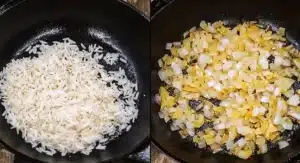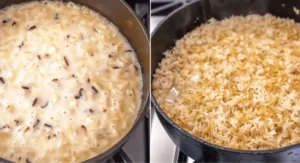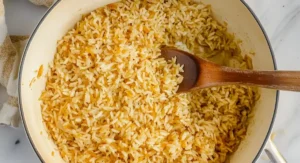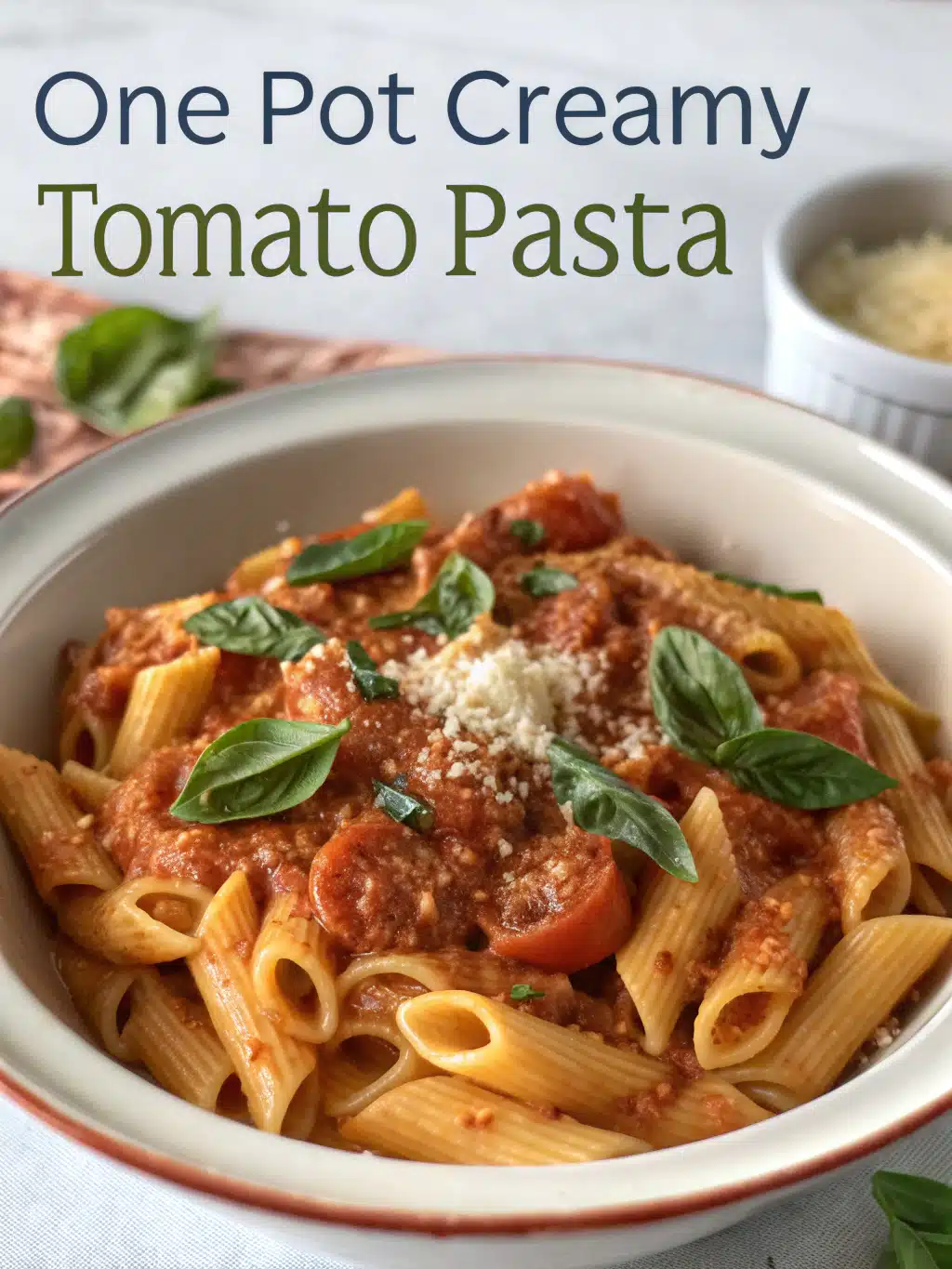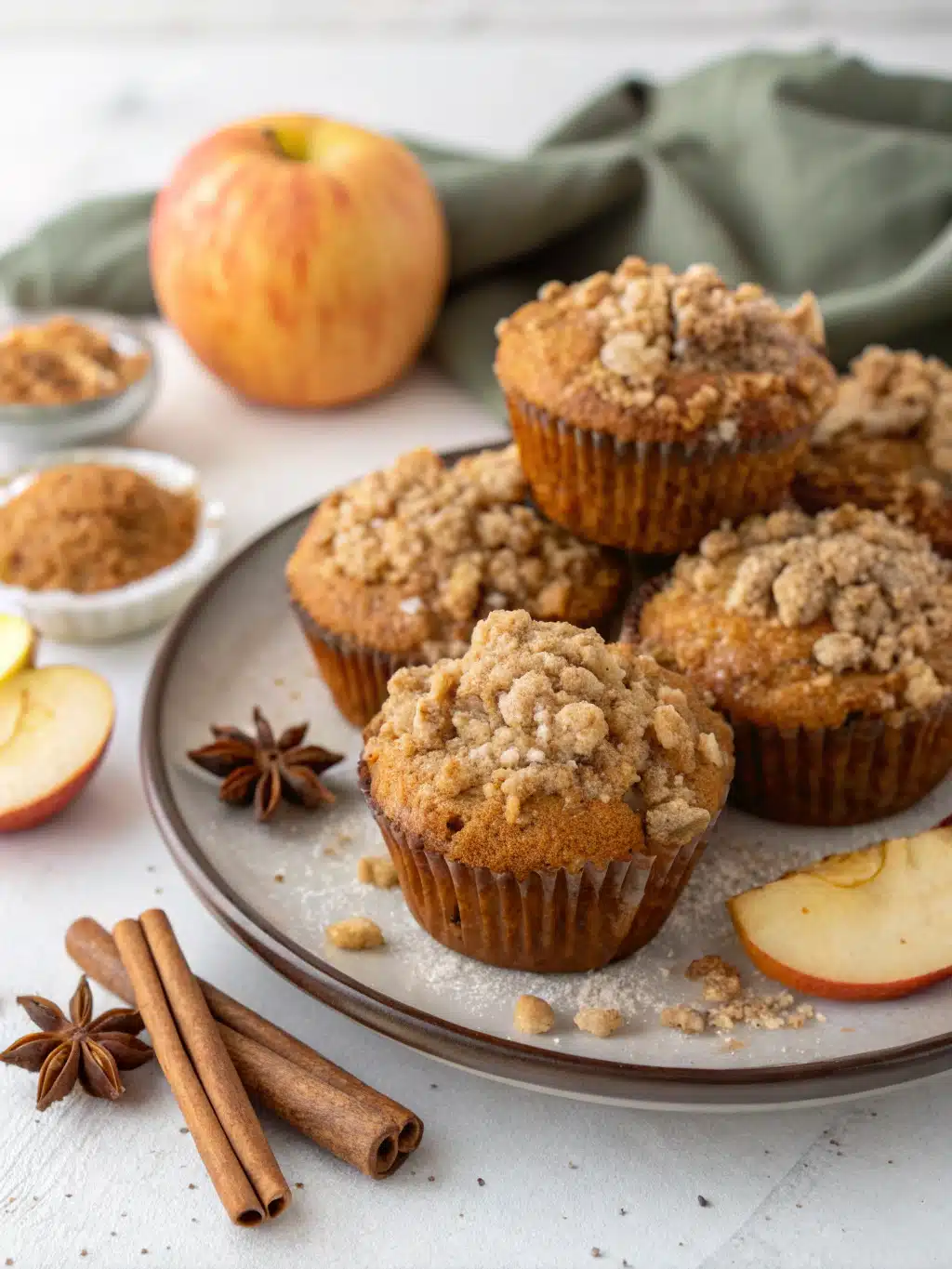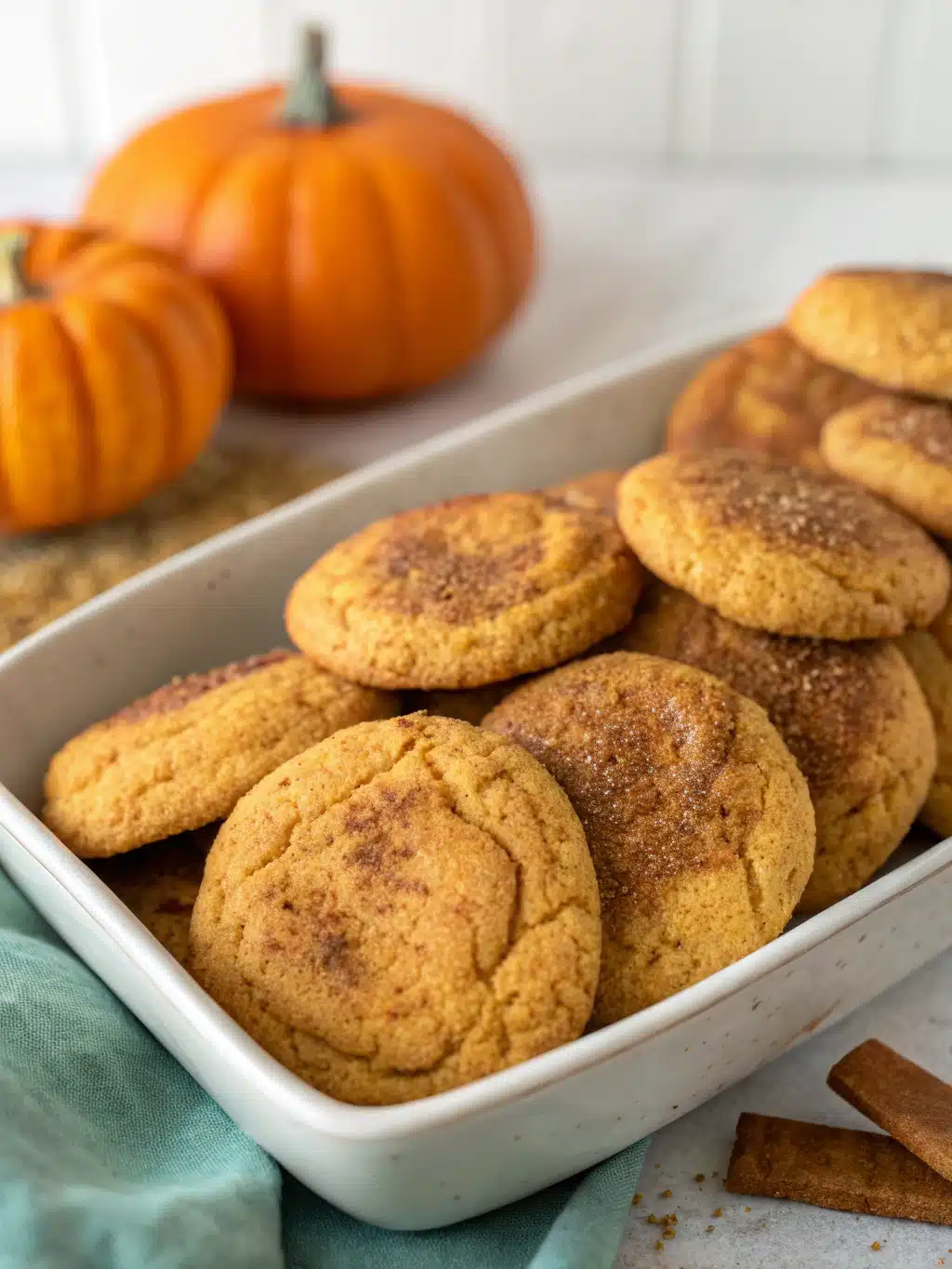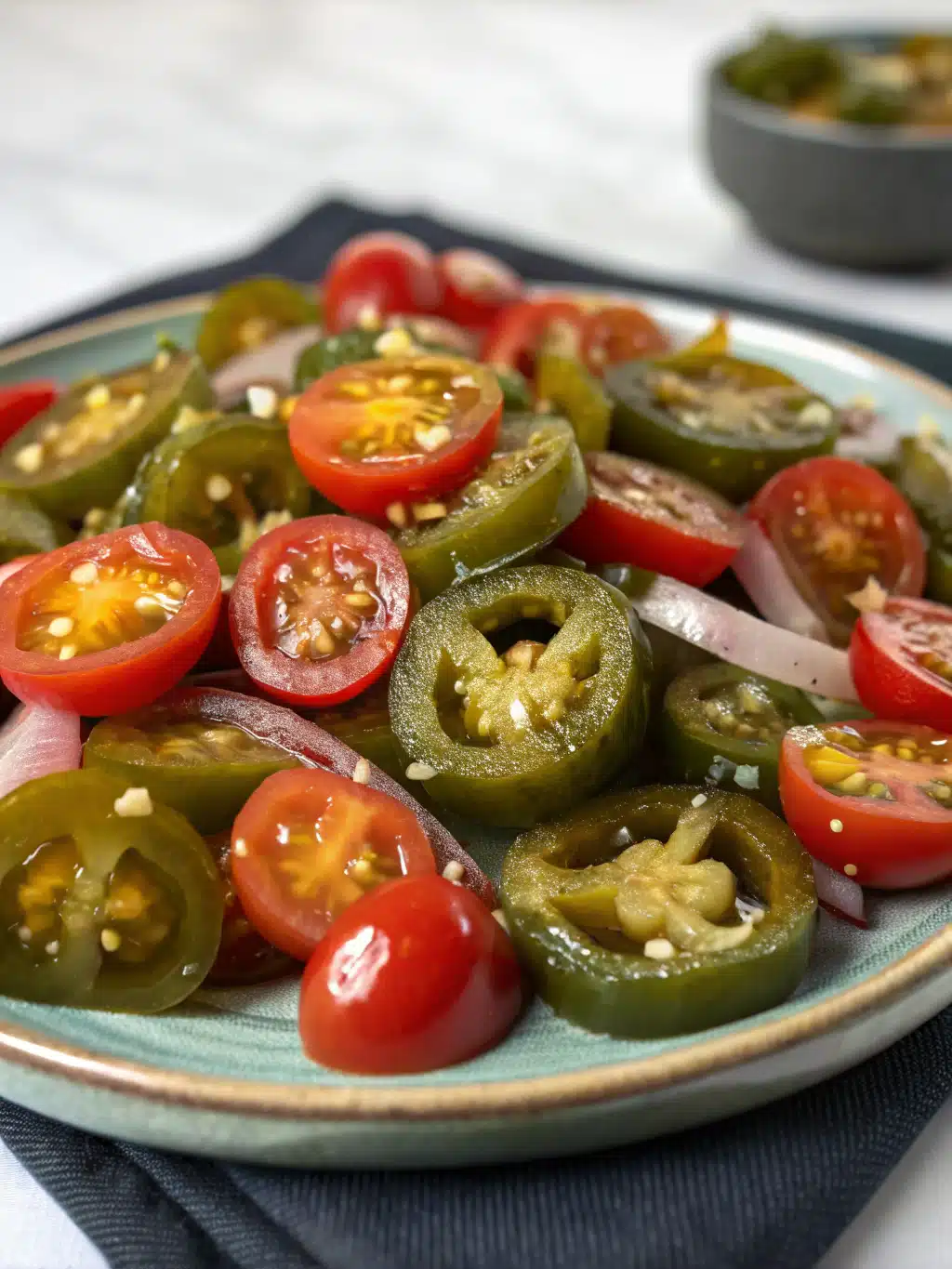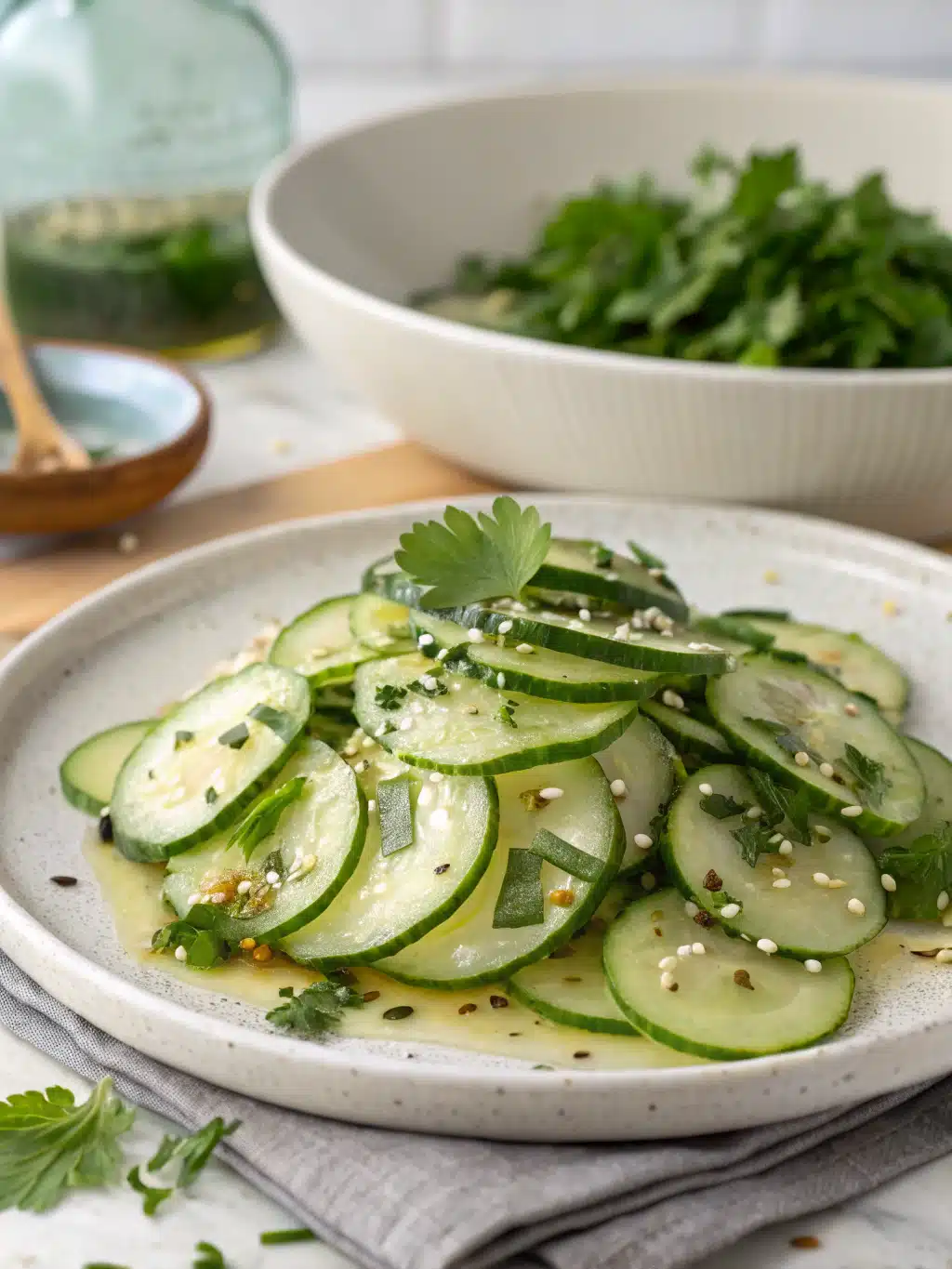Estimated reading time: 10 minutes
Dreaming of perfectly separate, aromatic grains of rice, each one light, tender, and infused with flavor? You’re dreaming of the perfect fluffy rice pilaf. Far from being a complicated dish reserved for restaurants, achieving that coveted fluffiness at home is entirely within your reach. This helpful guide will show you everything you need to know to make delicious rice pilaf at home. You will learn how to pick the best ingredients and use important cooking techniques. This way, your rice pilaf will always turn out great!
No more sticky or messy rice! We will explore how to make rice pilaf that is light and fluffy. It’s a tasty side dish that can make any meal better.
Table of contents
What Exactly is Rice Pilaf and Why is “Fluffy” the Goal?
Rice pilaf, at its core, is a dish where rice is first sautéed in fat (like butter or oil) with aromatics, often along with small pasta shapes like orzo or vermicelli, before being simmered in a flavorful broth. This initial toasting step is key: it coats the grains in fat, helping them stay separate during cooking, and develops a wonderful nutty flavor.
The “fluffy” aspect is the hallmark of a well-made pilaf. It means:
- Separate Grains: Each grain of rice is distinct, not stuck to its neighbors.
- Tender Texture: The rice is cooked through but retains a slight bite, far from being mushy.
- Aromatic: The pilaf is fragrant from the aromatics, toasted grains, and broth.
Achieving this texture isn’t just about aesthetics; it significantly impacts the overall taste and enjoyment of the dish.
Ingredients You’ll Need for Fluffy Rice Pilaf: The Foundation of Flavor
The quality of your ingredients will directly impact the final result. Here’s what you’ll need for a classic, easy fluffy rice pilaf:
- Rice (The Star):
- Best Choice: Long-grain white rice like Basmati or Jasmine. These varieties contain less amylopectin (the sticky starch) and more amylose, which helps the grains stay separate and fluffy. Basmati is particularly prized for its aromatic qualities and slender grains.
- Avoid: Short-grain rice (like Arborio or sushi rice) is high in amylopectin and designed to be creamy and sticky – great for risotto, not for fluffy pilaf.
- Fat (For Toasting & Flavor):
- Unsalted Butter: Adds richness and a classic flavor.
- Olive Oil (Light or Extra Virgin): A good alternative, especially for a lighter flavor or if you prefer a plant-based option (for a vegan version, ensure your broth is also vegetable-based). A combination of butter and oil also works wonderfully.
- Aromatics (The Flavor Builders):
- Onion: Finely chopped yellow or white onion provides a sweet, savory base. Shallots can also be used for a milder, more delicate flavor.
- Garlic: Minced garlic adds a pungent kick. Add it towards the end of sautéing the onions to prevent burning.
- Pasta (Optional but Recommended for Texture):
- Orzo or Broken Vermicelli/Fideo: These small pasta shapes, when toasted along with the rice, add another layer of texture and nutty flavor, often found in restaurant-style pilafs. About 1/4 to 1/2 cup per cup of rice is a good starting point.
- Liquid (For Cooking & Infusion):
- Chicken Broth or Vegetable-Broth: Using broth instead of water significantly boosts the flavor. Opt for low-sodium so you can control the saltiness. A quality homemade stock is even better.
- Water: Can be used in a pinch, but the flavor will be less complex.
- Seasonings:
- Salt: Essential for bringing-out all the flavors.
- Black Pepper: Freshly ground is best.
- Optional Herbs & Spices: Bay leaf, fresh parsley, dill, thyme, or a pinch of turmeric (for color and earthy notes) can be added.
Essential Equipment for Pilaf Perfection
You don’t need fancy gadgets, but the right tools make a difference:
- Heavy-Bottomed Pot or Dutch Oven with a Tight Fitting Lid: A heavy bottom distributes heat evenly, preventing scorching. A tight-fitting lid is crucial for trapping steam, which is essential for cooking the rice-properly. A 3-4 quart pot is usually sufficient for a standard batch.
- Fine-Mesh Sieve: For rinsing the rice, if you choose to (highly recommended!).
- Measuring Cups and Spoons: Accuracy, especially with the liquid-to-rice ratio, is key.
- Fork: For fluffing the cooked rice.
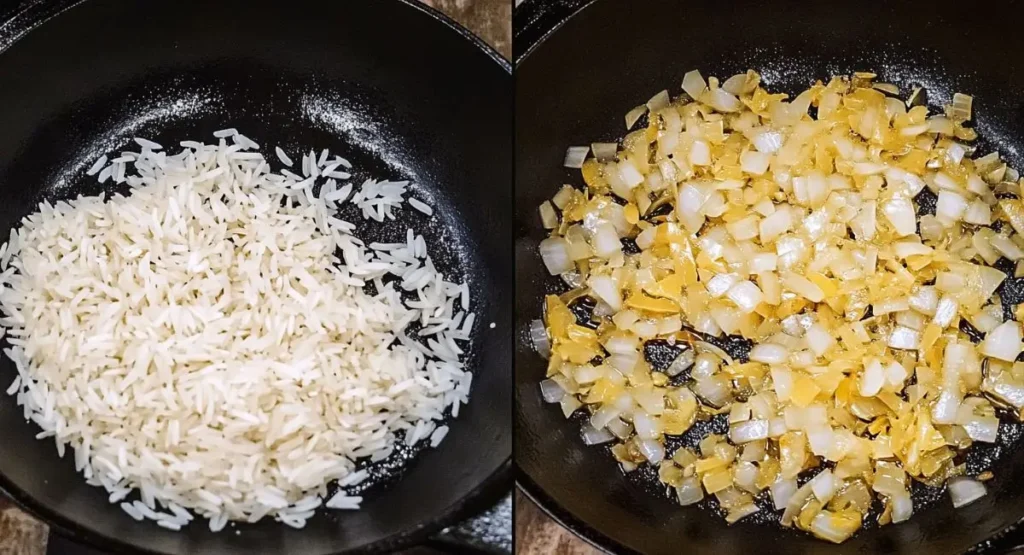
How to Make Fluffy Rice Pilaf: The Step-by-Step Method
Follow these steps meticulously for the best fluffy rice pilaf recipe:
Yields: 6 servings
Prep time: 10 minutes
Cook time: 25-30 minutes
Ingredients:
- 1.5 cups long-grain white rice (Basmati or Jasmine recommended)
- 2 tablespoons unsalted butter (or olive oil)
- 01 small yellow onion, finely chopped (about 1/2 cup)
- 2 cloves garlic, minced
- 1/2 cup orzo or broken vermicelli pasta (optional)
- 3 cups low-sodium chicken or vegetable broth
- 1/2 teaspoon salt (or to-taste)
- 1/4 teaspoon black pepper (or to-taste)
- Optional: 1 bay leaf
- Fresh parsley, chopped (for garnish)
Instructions:
- Rinse the Rice (Highly Recommended): Place the rice in a fine-mesh-sieve and rinse under cold running water until the water runs mostly-clear. This removes excess surface starch that can make the pilaf gummy. Drain well.
- Sauté Aromatics: In your heavy-bottomed pot or Dutch-oven, melt the butter (or heat olive-oil) over medium-heat. Add the chopped-onion and cook, stirring occasionally, until softened and translucent, about 3-5 minutes.
- Toast Rice & Pasta: Add the rinsed and drained rice and the optional orzo/vermicelli to the pot. Stir constantly for 02-03 minutes until the rice grains become slightly translucent at the edges and the pasta turns a light golden brown. You’ll notice a nutty aroma. Add the minced-garlic during the last 30 seconds of toasting, stirring to prevent burning.
- Add Liquid & Seasonings: Carefully pour in the broth. It will bubble and steam. Add the salt, pepper, and bay leaf (if using). Stir once to combine everything.
- Bring to a Simmer, then Cover & Cook: Increase the heat to medium high and bring the liquid to a gentle simmer. Once simmering, immediately reduce the heat to the lowest possible setting. Cover the pot with a tight-fitting lid. Do NOT lift the-lid or stir the rice from this point onwards until it’s done resting. Cook for 15-18 minutes, or until-all the liquid has been absorbed.
- Rest for Ultimate Fluffiness (Crucial Step!): Once the cooking time is up, remove the-pot from the heat (still-covered) and let it stand undisturbed for at least 10 minutes, or up to 15 minutes. This allows the steam to finish-cooking the rice and helps the grains firm up, ensuring maximum fluffiness. Do not skip this step!
- Fluff and Serve: Remove the lid. Discard the bay leaf. Gently-fluff the rice pilaf with a fork, lifting and separating the grains. Garnish with fresh-parsley if desired and serve hot.
Expert Tips for the Fluffiest Rice Pilaf Every Time
Mastering how to make rice pilaf fluffy not sticky comes down to a few key details:
- Rinse, Rinse, Rinse: Seriously, don’t skip rinsing the rice. It makes a huge difference in removing excess starch.
- Toast is King: The toasting step is non-negotiable for true pilaf. It not only adds flavor but also helps the grains absorb fat, keeping them separate.
- The Right Ratio: The general rule for long-grain white rice is a 1:2 ratio of rice to liquid (e.g., 1 cup rice to 2 cups broth). This recipe uses 1.5 cups rice to 3 cups broth. If you find your rice is consistently too wet or too dry, you can adjust slightly (e.g., by 1-2 tablespoons of liquid).
- Low and Slow Simmer: Once simmering, the heat must be very low. Too high, and the bottom will scorch before the rice is cooked.
- Patience is a Virtue (No Peeking!): Resist the urge to-lift the lid while the rice is simmering and resting. This releases steam, which is vital for even cooking.
- The Magic of Resting: This step is as important as the cooking itself. It allows the moisture to distribute evenly and the grains to firm up.
- Fork Fluff, Don’t Stir: Use a fork to gently lift and separate the grains. Stirring with a spoon can mash them and make the pilaf gummy.
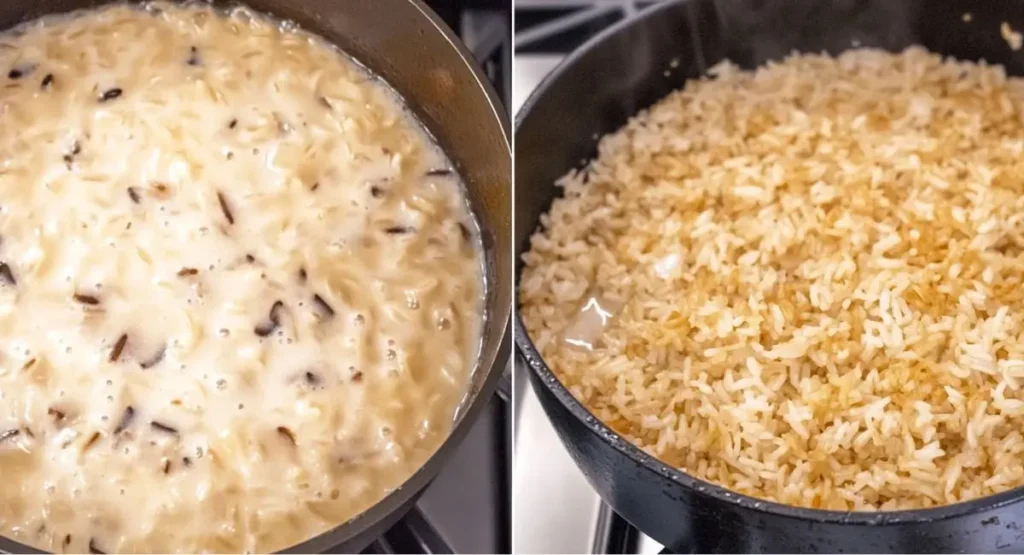
Common Rice Pilaf Mistakes (And How to Avoid Them)
- Sticky or Gummy Pilaf:
- Cause: Not rinsing rice, using short-grain rice, too much liquid, stirring during cooking, not resting.
- Fix: Follow the tips above!
- Mushy Pilaf:
- Cause: Too much liquid, overcooking, stirring.
- Fix: Measure liquid accurately, cook for the recommended time, don’t stir, and let it rest.
- Burnt Bottom:
- Cause: Heat too high during simmering, pot too thin.
- Fix: Use lowest heat setting, use a heavy-bottomed pot.
- Undercooked/Hard Rice:
- Cause: Not enough liquid, cooking time too short, lid not tight enough (steam escaped).
- Fix: Ensure correct liquid ratio, check for doneness (all liquid absorbed), use a tight lid. If it seems dry but undercooked, you can add a tablespoon or two of hot water, re-cover, and cook for a few more minutes, then rest.
Delicious Rice Pilaf Variations: Get Creative!
Once you’ve mastered the basic fluffy rice pilaf recipe, feel free to experiment:
- Vegetable Rice Pilaf: Sauté finely diced carrots, celery, peas, corn, or bell peppers along with the onions. Add frozen-peas during the last 05 minutes of resting (just sprinkle on top, re-cover).
- Mushroom Rice Pilaf: Sauté sliced mushrooms with the onions until browned before adding the rice.
- Nutty & Fruity Pilaf: Stir in toasted slivered almonds, pistachios, or pine nuts, and/or dried cranberries, raisins, or chopped apricots after fluffing the rice.
- Herb-Infused Pilaf: Add a sprig of fresh rosemary or thyme along with the bay leaf. Stir in plenty of fresh chopped parsley, dill, or cilantro at the end.
- Spiced Pilaf: Add a pinch of turmeric or saffron threads (bloomed in a little warm broth) for color and flavor. A pinch of cumin or coriander can also be lovely.
- Lemon Rice Pilaf: Stir in the zest of one-lemon and a tablespoon of fresh lemon juice after fluffing.
What to Serve with Fluffy Rice Pilaf
This versatile side-dish pairs wonderfully with a wide array of main courses:
- Roasted or grilled chicken, turkey, or fish
- Lentil stews or chickpea curries
- Kebabs or grilled meats
- Steamed or roasted vegetables
- As part of a mezze platter
Storing and Reheating Leftover Pilaf
- Storage: Cool the pilaf completely, then store it in an airtight-container in the refrigerator for up to 3-4 days.
- Reheating:
- Microwave: Add a tablespoon of-water or broth per cup of pilaf, cover loosely, and microwave until heated through, fluffing midway.
- Stovetop: Add a little broth or water to a pan, add the pilaf, cover, and heat over low heat, stirring-occasionally, until warmed through.
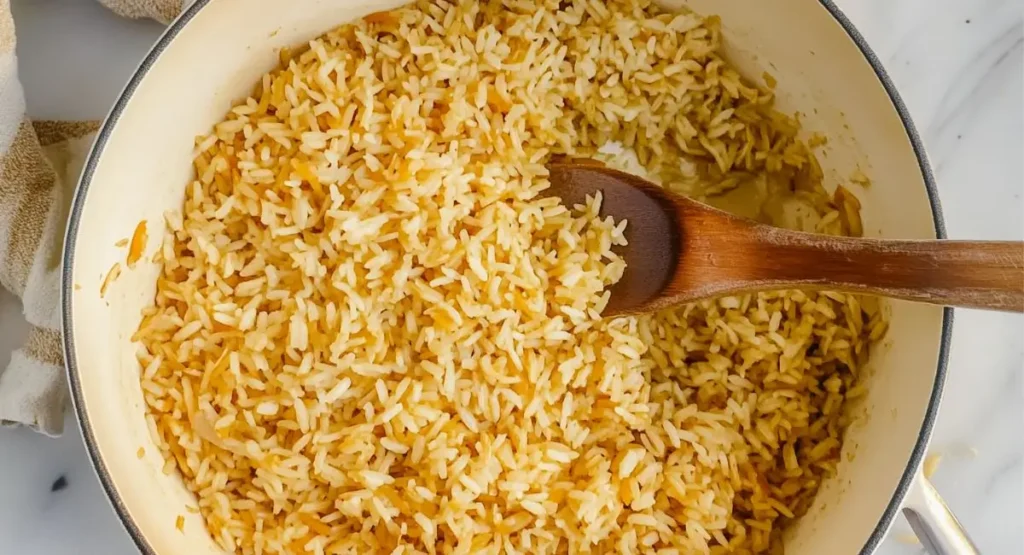
Frequently Asked Questions (FAQ) about Fluffy Rice Pilaf
u003cstrongu003eQ: Can I use brown rice for fluffy pilaf?u003c/strongu003e
A: Yes, but brown rice requires more liquid (typically a 1:2.5 rice to liquid ratio) and a longer cooking time (around 40-45 minutes, followed by a 10-15 minute rest). The texture will be chewier.
u003cstrongu003eQ: Why is my rice pilaf sticky even when I follow the recipe?u003c/strongu003e
A: The most common culprits are not rinsing the rice thoroughly, using the wrong type of rice (short-grain), or not letting it rest sufficiently. Also, ensure your lid is truly tight-fitting.
u003cstrongu003eQ: Should you rinse rice for pilaf?u003c/strongu003e
A: Yes, for the fluffiest results, rinsing long-grain white rice is highly recommended to remove excess surface starch.
u003cstrongu003eQ: What is the best rice to use for fluffy pilaf?u003c/strongu003e
A: Long-grain white-rice, such as Basmati or Jasmine, is ideal due to its lower-starch content and ability to cook up into separate, fluffy grains.
u003cstrongu003eQ: Can I make fluffy rice pilaf ahead of time?u003c/strongu003e
A: Absolutely! It reheats well. Follow the storage and reheating instructions above.
Conclusion: Your Journey to Pilaf Perfection
Making exceptionally fluffy rice pilaf is a culinary skill that, once mastered, will reward you time and time again. By understanding the role of each ingredient, respecting the techniques (especially toasting and resting!), and paying attention to detail, you can consistently-produce a side dish that’s light, flavorful, and perfectly textured. So, gather your ingredients, embrace the process, and get ready to enjoy the simple-pleasure of perfectly cooked rice pilaf!
Related Recipes You Might Enjoy
Did You Make This Recipe!
There are no reviews yet. Be the first one to write one.
Perfectly Fluffy Rice Pilaf
- Total Time: 45 minutes
- Yield: 6
Description
Achieve perfectly separate, aromatic, and tender grains with this foolproof fluffy rice pilaf recipe. Learn the secrets to toasting, simmering, and resting your way to a delicious side dish that elevates any meal. Ideal with chicken, fish, or vegetable mains.
Ingredients
- 1.5 cups long-grain white rice (Basmati or Jasmine recommended)
- 2 tablespoons unsalted butter (or olive oil)
- 1 small yellow onion (finely chopped, about 1/2 cup)
- 2 cloves garlic (minced)
- 1/2 cup orzo or broken vermicelli pasta (optional)
- 3 cups low-sodium chicken or vegetable broth
- 1/2 teaspoon salt (or to taste)
- 1/4 teaspoon black pepper (or to taste)
- 1 bay leaf (optional)
Instructions
- Rinse the Rice (Highly Recommended): Place the rice in a fine-mesh sieve and rinse under cold running water until the water runs mostly clear. This removes excess surface starch. Drain well.
- Sauté Aromatics: In your heavy-bottomed pot or Dutch oven, melt the butter (or heat olive oil) over medium heat. Add the chopped onion and cook, stirring occasionally, until softened and translucent, about 3-5 minutes.

- Toast Rice & Pasta: Add the rinsed and drained rice and the optional orzo/vermicelli to the pot. Stir constantly for 2-3 minutes until the rice grains become slightly translucent at the edges and the pasta turns a light golden brown. You’ll notice a nutty aroma. Add the minced garlic during the last 30 seconds of toasting, stirring to prevent burning.
- Add Liquid & Seasonings: Carefully pour in the broth. It will bubble and steam. Add the salt, pepper, and bay leaf (if using). Stir once to combine everything.
- Bring to a Simmer, then Cover & Cook: Increase the heat to medium-high and bring the liquid to a gentle simmer. Once simmering, immediately reduce the heat to the lowest possible setting. Cover the pot with a tight-fitting lid. Do NOT lift the lid or stir the rice from this point onwards until it’s done resting. Cook for 15-18 minutes, or until all the liquid has been absorbed.

- Rest for Ultimate Fluffiness (Crucial Step!): Once the cooking time is up, remove the pot from the heat (still covered) and let it stand undisturbed for at least 10 minutes, or up to 15 minutes. This allows the steam to finish cooking the rice and helps the grains firm up.
- Fluff and Serve: Remove the lid. Discard the bay leaf. Gently fluff the rice pilaf with a fork, lifting and separating the grains. Garnish with fresh parsley if desired and serve hot.

Notes
Tips for Success:
* Rinse Rice: Don’t skip rinsing for the fluffiest texture.
* Toast Grains: Toasting rice and pasta (if using) adds flavor and helps keep grains separate.
* No Peeking: Keep the lid on tight during simmering and resting to trap steam.
* Resting is Key: Allow the 10-minute rest period for perfect fluffiness.
Variations:
* Vegetable Pilaf: Add diced carrots, celery, or peas with the onions.
* Nutty Pilaf: Stir in toasted almonds or pistachios after fluffing. Storage & Reheating:
* Store cooled pilaf in an airtight container in the refrigerator for up to 3-4 days.
* Reheat in the microwave with a splash of water, or on the stovetop over low heat.
- Prep Time: 10 minutes
- Cook Time: 25 minutes
- Category: Side Dish
- Cuisine: American

